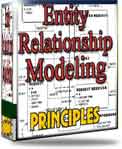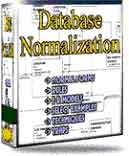 |
||
|
|
Agile PM | Multidimensional PM | Collaborative PM | Project Time Tracking | PM Success | PM Failure Software Project Management : IntroductionThis section deals with software project management. It contains a series of introduction articles to software project management.No other industry has such a degree of failure in its projects as the IT industry. No wonder, really: Designing databases is more of an art than a craft, and the same goes for developing software. Our industry is very much based on individual skills, and as such, results are often unpredictable. That's why it is said that 50% of all IT projects are failures... The IT industry is very project oriented; we are presented specific tasks to solve, and when they are done, we move on to the next task, or software project. So, software project management is crucial in order to manage, control and disclose early signs of project failure, so they can be corrected, and the project brought back on the right course again. Several skills are involved in project management, and this section of the website intends to give you a short, head-on, introduction to the subject via a set of easy-to-read keynotes. Even if your profession is a database designer, analyst, DBA, software engineer, or other, you will be participating in software projects, and it will be very useful for you to have an insight into software project management.
This concludes this section on Software Project Management. Return to Database Design home
|
Exclusive interviews with:
Free eBookSubscribe to my newsletter and get my ebook on Entity Relationship Modeling Principles as a free gift: What visitors say...
"I just stumbled accross your site looking for some normalization theory and I have to say it is fantastic.
Read more
Testimonials
I have been in the database field for 10+ years and I have never before come across such a useful site. Thank you for taking the time to put this site together." Mike, USA |
|
Theory & Practice DB Normalization Analysis Phase Database Keys DB Glossary Appl.Architecture Oracle DBA MySQL DBA SQL Server DBA Install Oracle Install SQL Server Proj.Management Oracle Constraint Programming Tips Database Normalization eBook: |
||
|
Copyright © www.databasedesign-resource.com /
All rights reserved. All information contained on this website is for informational purposes only. Disclaimer: www.databasedesign-resource.com does not warrant any company, product, service or any content contained herein. Return to top
The name Oracle is a trademark of Oracle Corporation. |
||